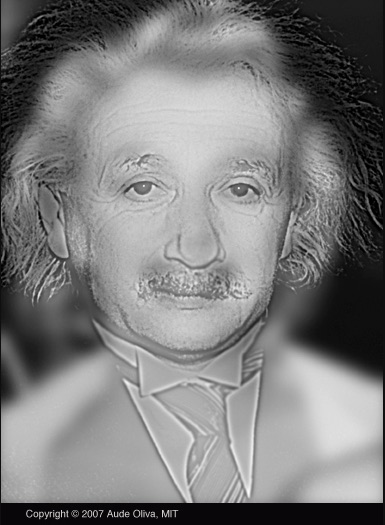
Spatial frequency means how often things change in space. High spatial frequency changes means lots of small detail. Spatial frequency is surprisingly important to our visual system – lots of basic features of the visual world, like orientation or motion, are processed first according to which spatial frequency the information is available at...
Spatial frequency is also why, when you're flying over the ocean, you can see waves which appear not to move. Although your vision is sensitive enough to see the wave, the motion sensitive part of your visual system isn't as good at the fine spatial frequencies – which creates a natural illusion of static waves.
See Einstein below? Now go a few steps back from your screen and look again:



